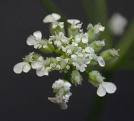 Came upon a story I had saved told by Sadhguru Jaggi Vasudev. It is about transformation using the example of the caterpillar and the butterfly. Old news, but told in a way that brought a new perspective. I was looking for new images to go with the text and came up a site presenting something called 'live release.' I found out it was about basketing living butterflies and shipping them to an event to be released for effect. Sounds magical ... but not for the butterflies. They are bred on a farm and then trapped while they are forced to travel far distances only to be released in a strange place. It just seems to selfish and cruel, especially when I found out that butterflies don't live more than a year and some have life-spans as short as two days.
Came upon a story I had saved told by Sadhguru Jaggi Vasudev. It is about transformation using the example of the caterpillar and the butterfly. Old news, but told in a way that brought a new perspective. I was looking for new images to go with the text and came up a site presenting something called 'live release.' I found out it was about basketing living butterflies and shipping them to an event to be released for effect. Sounds magical ... but not for the butterflies. They are bred on a farm and then trapped while they are forced to travel far distances only to be released in a strange place. It just seems to selfish and cruel, especially when I found out that butterflies don't live more than a year and some have life-spans as short as two days.black swallowtail
What I would like to do is create an environment that is suitable for them to live naturally. There are certain plants that attract butterflies. I experienced this at the local botanical gardens. It was amazing to see them flying all around me, so I can see the appeal of the live release service. The same site that provides this gives info on attracting butteflies to your yard. There's more to it than I realized. It's not just about attracting them, you can also provide an environment for breeding. If they grow up on your property, they are more likely to be around when they metamorphisize into their winged forms. It goes something like this: You provide host plants which are great for laying eggs. Feeding plants are food for the caterpillars. The only ones I knew about were the nectar plants which attract the butterflies with their sweet nourishment. In turn, they help these plants spread their seed so they can propagate without moving an inch.
parsley flower
This reminds me of a sudden realization I had that plants are the most superior beings. They thrive even though they lack the ability to move. They seem so helpless, at the mercy of all beings who can move and do things to them. They can be eaten, inhabited, and uprooted. But maybe that's the way they developed themselves. Maybe they are less helpless and more effortless.
When you look at people who have reached a high level of mastery, they are more effortless in their actions. They can do more by doing less. I think of Morihei Ueshiba, the Aikido master. Towards the end, he hardly moved as he effortlessly spattered all attacks without moving much at all. It was hilarious to behold.
 I didn't look at the site extensively, but it seems to have much information. It's a good place to start anyway. One thing I spotted was that they have info on butterflies found in a given area and the plants that attract them.
I didn't look at the site extensively, but it seems to have much information. It's a good place to start anyway. One thing I spotted was that they have info on butterflies found in a given area and the plants that attract them.



No comments:
Post a Comment